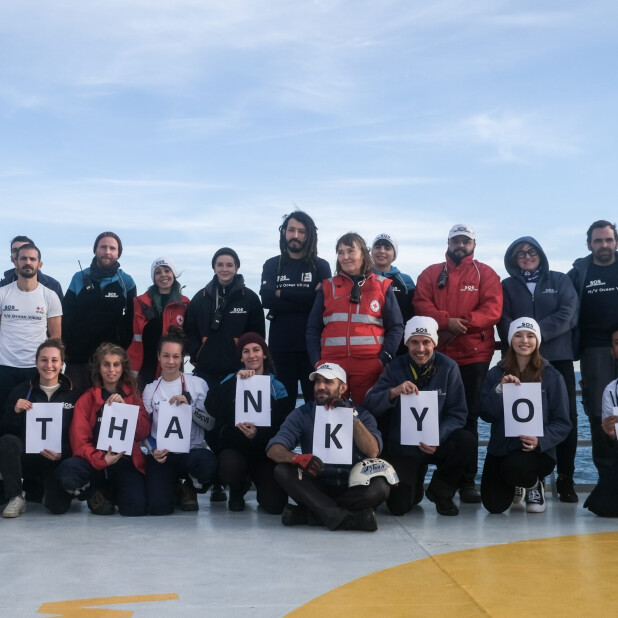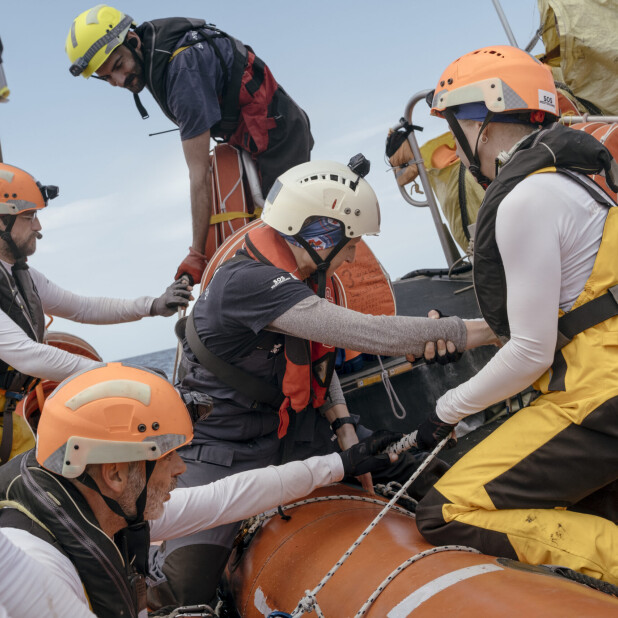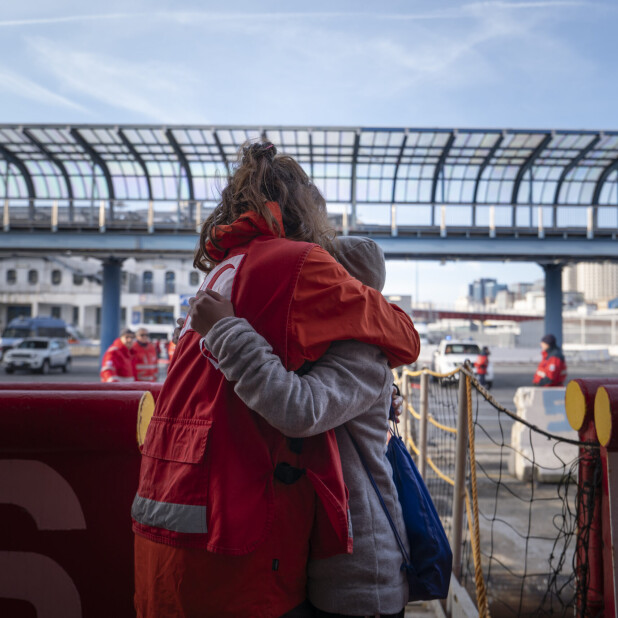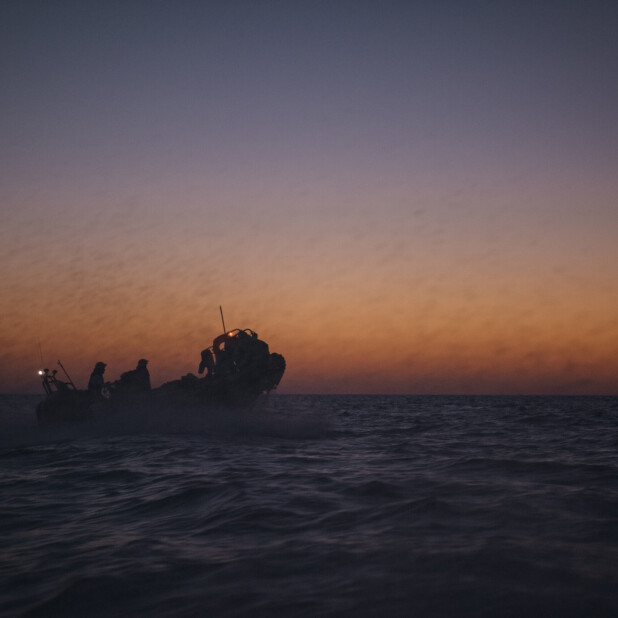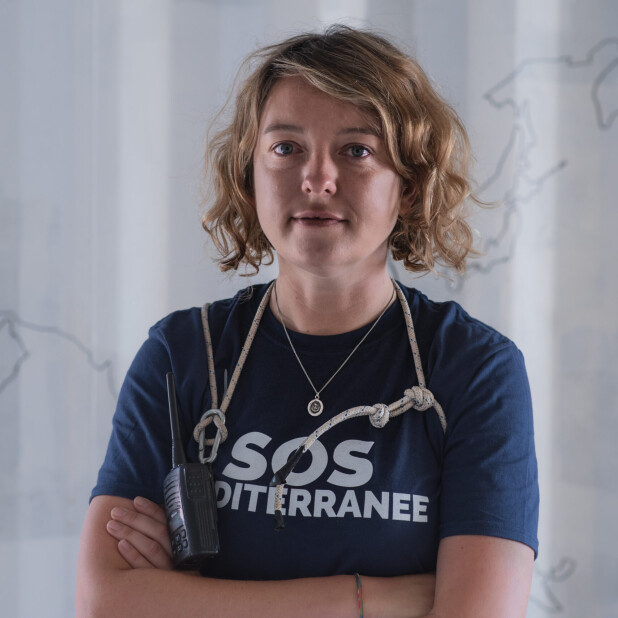
Justine, rescuer on board the Ocean Viking shares her experience and challenges during a night rescue on October 22, 2022
“The major issue in night rescues is visibility. Sometimes moon light helps our navigation and search lights to illuminate our area of operation. During this night rescue on October 22nd, the sea was calm but the night was dark: barely a quarter moon to illuminate us.
In addition to the lack of visibility due to the night, there was also the lack of visibility of the boats themselves. They have no navigation lights (often only mobile phone lights are used as lights and their range is limited). There is a real risk of not being able to locate them. Sometimes we locate them at the last minute, the boat is less than a nautical mile away from the Ocean Viking, or even completely in our path, putting them at risk of capsizing.
Once the boats have been located, there are a number of challenges to consider when conducting a night rescue.
During the first approach to the boat, major concentration is required in order not to miss key elements (a person who has fallen into the water in pitch dark, the analysis of the boat’s structure is more difficult to perceive, to anticipate if there are injured people on board is more complicated…)
The night also pushes us to find the balance between seeing and being seen: not being blinded between our rescue boats while having a good view of the scene; creating trust with people in distress when they can hardly see us.
Night operations mobilise our senses. As they have no visual contact, drivers focus more on their perceptions the elements and the lifeboat’s response.
For the team in general, the senses are used more to compensate for the limited visual evidence: listening for voices and calls, to understand if people in distress are calm or anxious. Smelling fuel, for example, gives us an indicator of a potential fuel canister that could have been spilled and caused burns to people in the boat.”
Photo credits: Camille Martin Juan / SOS MEDITERRANEE

